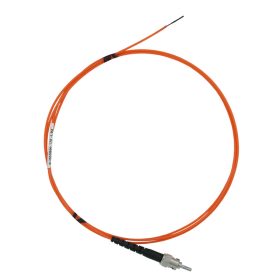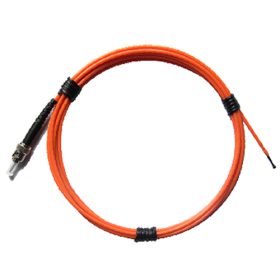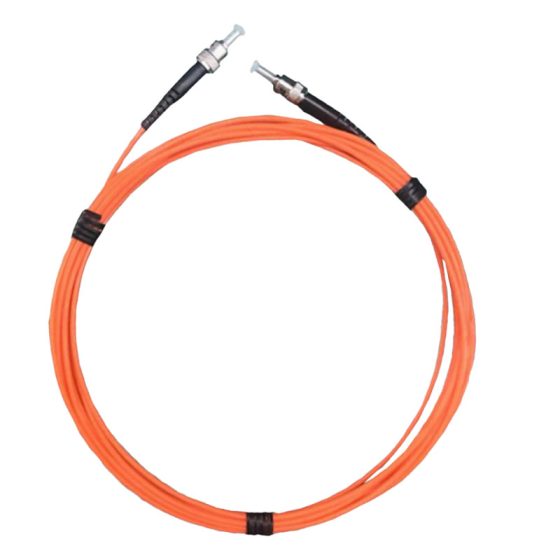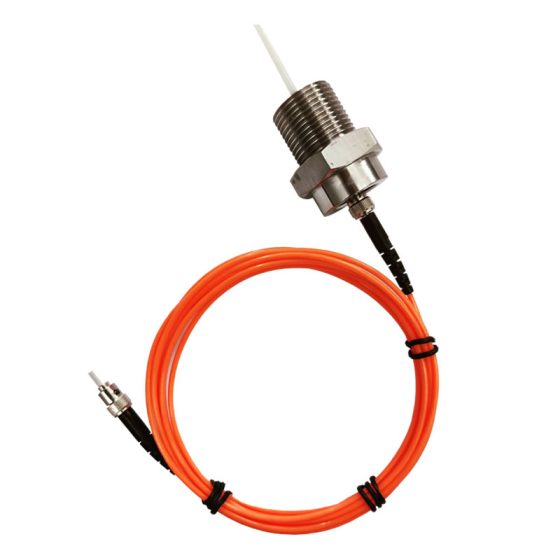The length, accuracy, temperature measurement range, fiber diameter, and sheath material of fiber optic temperature sensors can be customized according to your needs. Please contact us for consultation!
Fluorescent fiber optic temperature sensing probes have many advantages that other temperature sensing probes cannot compare to, such as good electrical insulation, مقاومت در برابر تداخل الکترومغناطیسی, chemical corrosion, and no pollution. This makes fluorescent sensing probes not only used in many fields such as biology and medicine, but also have broad application prospects in the power industry. They are mainly used for temperature measurement of high-voltage instruments in electrical equipment, temperature measurement between generator diagnostic systems and transformer windings, temperature measurement of high-voltage circuit breaker contacts, and temperature measurement of high-voltage cable joints.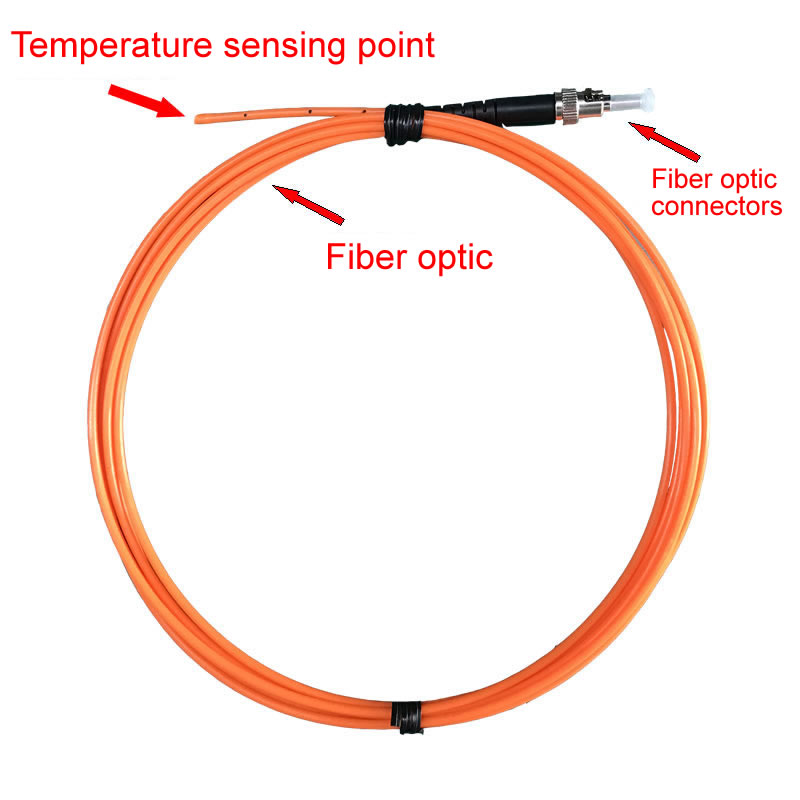
Introduction to Fluorescent Fiber Optic Sensing Probes
پروب فیبر نوری از سه قسمت تشکیل شده است: اتصال ST, کابل فیبر نوری, و پایان سنجش دمای پایان. کانکتور ST قسمت اتصال با ماژول فوتوالکتریک است; کابل فیبر نوری قسمت انتقال است, با الیاف کوارتز در داخل. الیاف کوارتز دارای پوشش و روکش در خارج است, و یک آستین محافظ تفلون در بیرونی ترین قسمت; انتهای سنجش دمای انتهایی حاوی مواد خاکی کمیاب سنجش دما است, که برای تولید سیگنال های نوری حاوی اطلاعات دما استفاده می شود; فیبر نوری در برابر درجه حرارت بالا مقاوم است 200 °C و دارای قطر خارجی 3 میلی متر است. شعاع خمش طولانی مدت 13.2 سانتی متر. شعاع خمش کوتاه مدت 4.4 سانتی متر. زمانی که فاصله بین سرب فیبر نوری و زمین 0.4 متر باشد, این می تواند ولتاژ فرکانس برق 100 کیلو ولت را برای مدت زمان مقاومت کند 5 دقیقه.

The Temperature Measurement Principle of Fluorescent سنسور دمای فیبر نوری
A سنسور دمای فیبر نوری فلورسنت is composed of a multimode fiber optic and a fluorescent object (membrane) installed at its top. Fluorescent substances emit fluorescence energy when stimulated by light of a certain wavelength (stimulated spectrum). After the incentive is revoked, the persistence of fluorescence afterglow depends on factors such as the characteristics of the fluorescent substance and environmental temperature. This excited fluorescence usually decays exponentially, and the decay time constant is called fluorescence lifetime or fluorescence afterglow time. The attenuation of fluorescence afterglow varies at different ambient temperatures. بنابراین, by measuring the lifespan of fluorescence afterglow, the ambient temperature at that time can be determined.

 سنسورهای دمای فیبر نوری INNO ,سیستم های نظارت بر دما.
سنسورهای دمای فیبر نوری INNO ,سیستم های نظارت بر دما.


